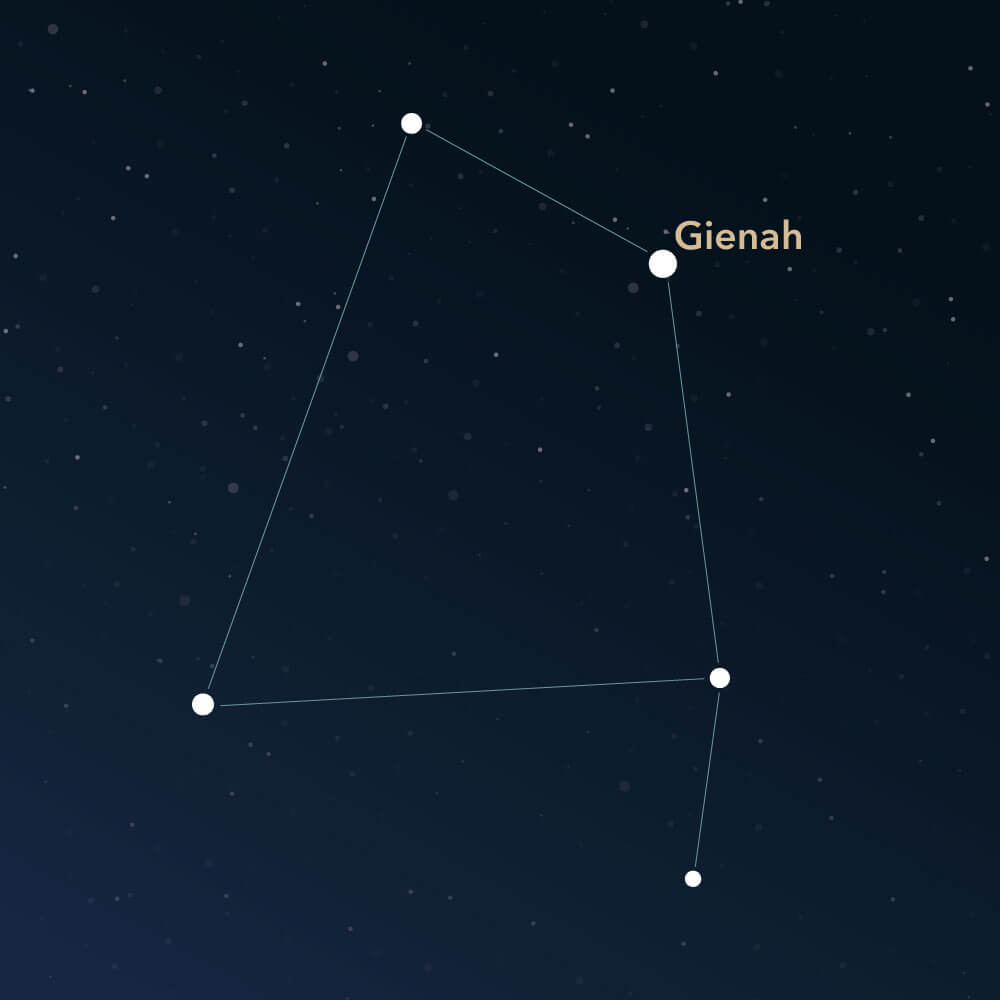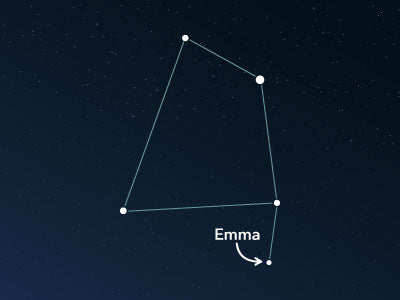The constellation Corvus
Characteristics
- Other names / Symbolism
- Crow, Raven
- Hemisphere
- Southern hemisphere
- Visibility
- January - May
- Area
- 184 deg²
- Brightest star
- Gienah (HIP number 102488)
- Specialties
- Galaxies, planetary nebula

The constellation Corvus symbolizes a crow or raven and is a small dim constellation in the southern celestial sky. It is one of the 48 classical constellations described by the Greek-Roman astronomer Claudius Ptolemy. There are no particularly prominent deep-sky objects in its area.
Hemisphere, visibility, and area
The constellation Corvus lies in the southern hemisphere and is visible from many places around the world. It can be observed from anywhere south of the equator and is fully visible in the night sky up to the 65th parallel north in the northern hemisphere. This means it can be seen almost as far north as the Arctic Circle.
The best months to observe the constellation are from January to May, with May offering particularly good conditions for observing it.
Corvus covers an area of about 184 square degrees in the night sky, making it one of the smaller constellations. Compared to all other 88 constellations, it ranks 70th with its size.
In many star maps, the constellation is visualized with its four main stars connected to each other in an irregular quadrilateral. A connection to a fifth star is often drawn, representing Raven's beak.
Gienah (Latin: ε Corvi, Epsilon Corvi) is the brightest star in Corvus, a double-star system located about 155 light-years away from earth. It has an apparent magnitude of roughly 2.6.
The constellation Corvus is adjacent to the constellation Virgo, which is particularly well-known in astrology. The Crater and the Hydra also lie in close proximity. The Raven has a close mythological connection with these constellations.
Specialties in the constellation
William Herschel, a German-British astronomer, discovered an interesting pair of galaxies and a planetary nebula in 1785, among other things.
The galaxy pair is formed by the two objects NGC 4038 and NGC 4039 and is known as the Antennae Galaxies. The strong gravitational forces deformed and merged the two galaxies into each other. The pair is located about 66 million light-years away and has an apparent magnitude of about 10.5.

The galaxy pair is part of a galaxy group located on the boundary of the constellations Corvus and Crater. According to estimates, the group consists of 13 to 27 galaxies.
Another member of the galaxy group is the barred spiral galaxy NGC 4027, or Arp 22. Its unique extended spiral arm also gave it the name Ringtail Galaxy. The distance to earth is estimated to be 83 million light-years.
The planetary nebula is cataloged as NGC 4361. It is located approximately 4,300 light-years away and has a white dwarf star in its center.
The above-mentioned objects are difficult to perceive with the naked eye and require professional equipment, such as a telescope or binoculars.
Mythology
In Greek mythology, the raven appears in the story of Apollo, who sent him with a cup to fetch water from a spring. On his way, however, the raven was distracted by unripe figs he wanted to taste. He waited for a few days until the fruit was ripe, causing a significant delay in fulfilling his task.
To appease Apollo, the raven came up with an excuse. He claimed that at the spring, he found a water snake that had blocked his access to the water for days. He killed the snake and then accused it of causing the delay.
However, Apollo saw through the lie and enraged punished all three characters by placing them in the sky as a warning to all liars - the cup as Crater, the water snake as Hydra, and the raven with the Latin name Corvus.
PublishedRead more interesting articles

An overview of all 88 constellations
Learn more about all 88 constellations and read interesting information about the mythology, visibility, and features.

Planetarium App
Discover the night sky with our planetarium app!
Available for iOS and Android.

Name a star in the constellation Corvus
Name a star in a constellation and create something that lasts for eternity.